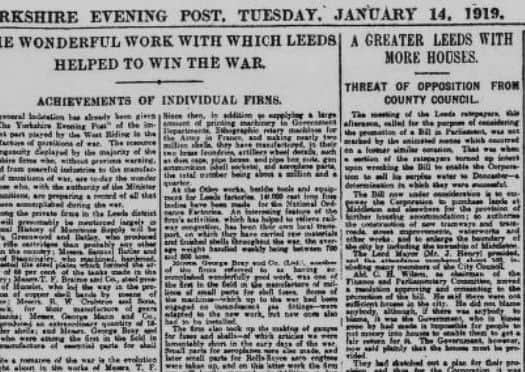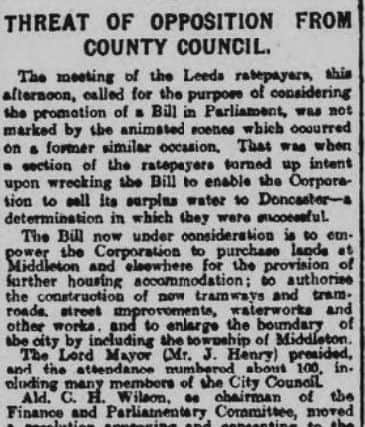Leeds nostalgia: Leeds looks to expand in 1919
and live on Freeview channel 276
It is worth noting that the First World War was a period of great social change, not least in terms of moving populations.
The war was waged on an industrial scale. Munitions factories across the country - although Leeds was singled out after the war for its extraordinary efforts in terms of production - needed workers, thousands of them. At its height, the factory at Barnbow employed over 10,000, running shifts around the clock.
Advertisement
Hide AdAdvertisement
Hide AdThe great machine of industry had the effect of drawing in swathes of people from the countryside, so that the population of Leeds trebled from 78,981 before the war to 232,909. Great change also came socially, with women getting the vote - there were over 95,000 in Leeds at the end of 1918.


Inevitably, the city authorities sought to cater for the new inhabitants - a story which ran on Tuesday January 14, 1919, ran with the headline ‘A Greater Leeds With More Houses’ and the sub-deck: ‘Threat of Opposition From County Council’.
It outlined a Bill in Parliament which would “enable the Corporation to sell its surplus water to Doncaster… to empower the Corporation to purchase lands at Middleton and elsewhere for the provision of further housing accommodation, to authorise the construction of new tramways and tramroads, street improvements, waterworks and other works and to enlarge the boundary of the city by including the township of Middleton.”
Considering the extent of Leeds today, that seems a mere trifle but in 1919, people were fiercely parochial. There were still vast stretches of green between Leeds proper and neighbouring towns such as Morley and Pudsey.
Advertisement
Hide AdAdvertisement
Hide AdAld C H Wilson, chair of the finance committee, lambasted the government for not providing more houses sooner and said the West Riding authority had already signalled its opposition to Leeds extending its boundary, principally over fears it would then increase the rateable value of “a part of the West Riding, over Leeds”.


Even local builders objected to the scheme, citing a number of plots owned by them, which were ready to be built upon - they were overruled and, moreover, censured by the committee, which basically argued they were in it for the money and had, in any case, ample opportunity to build upon the land.